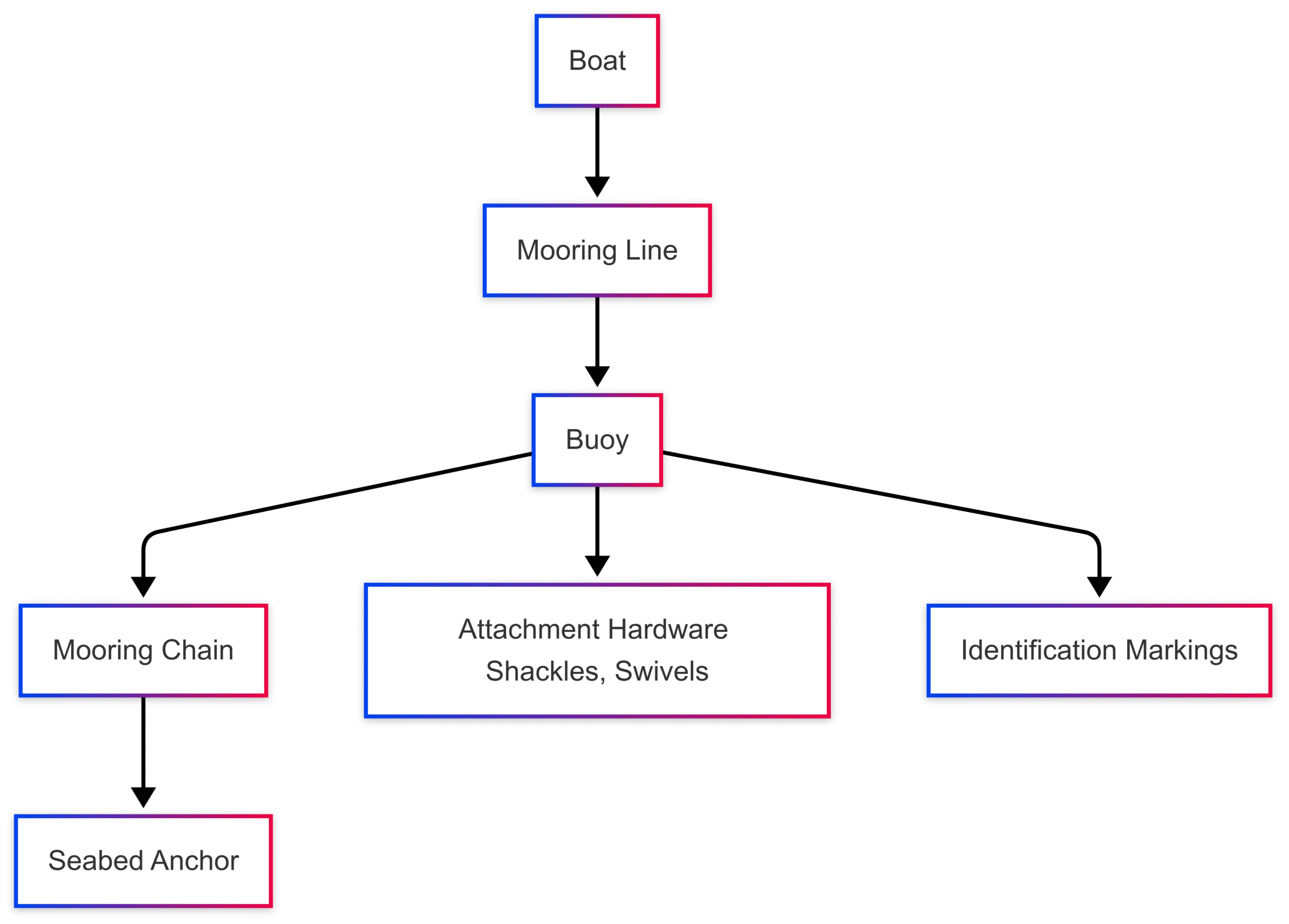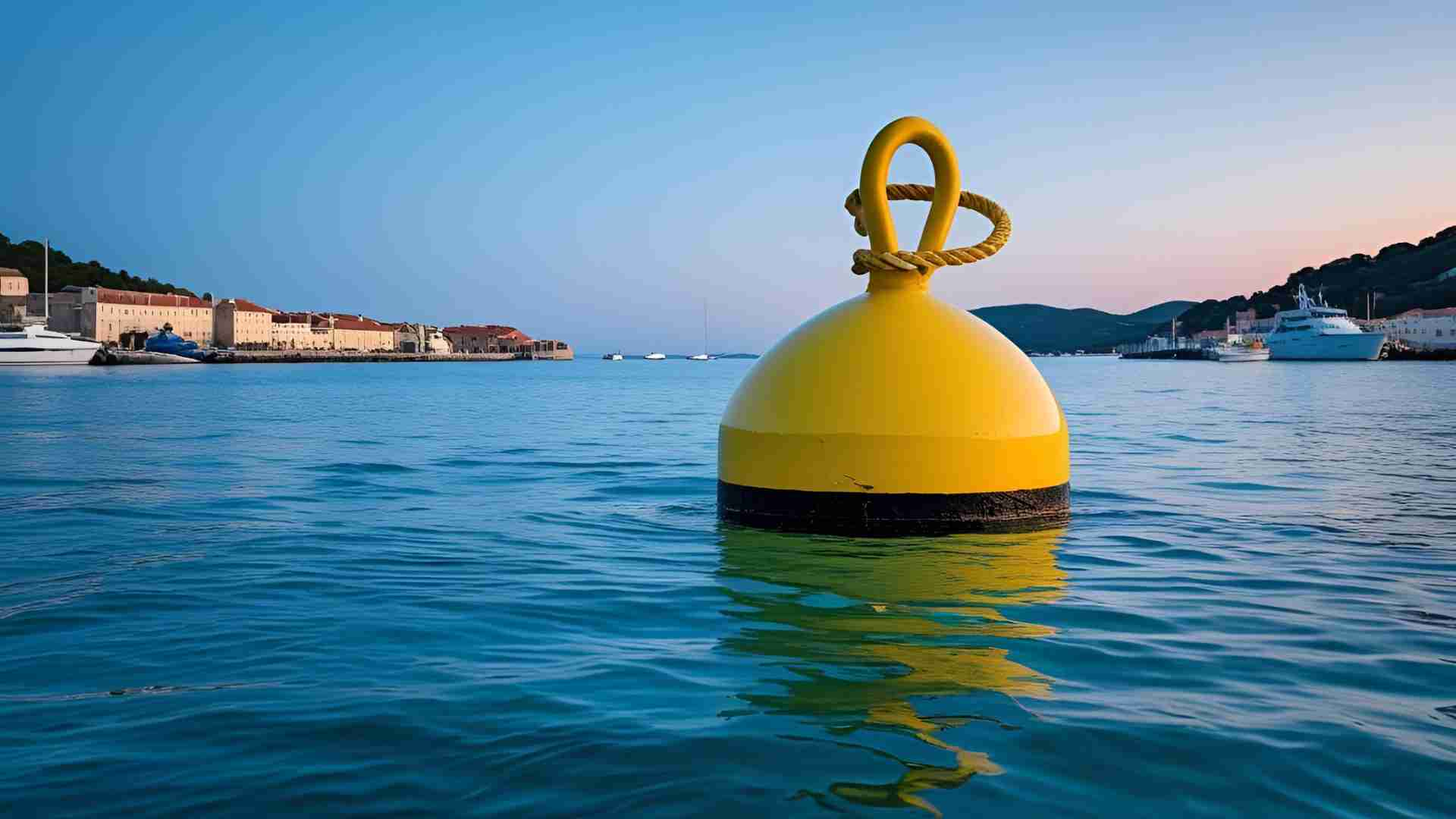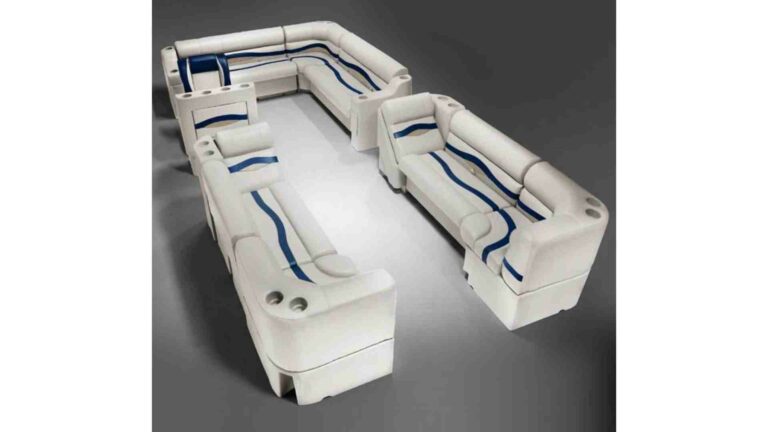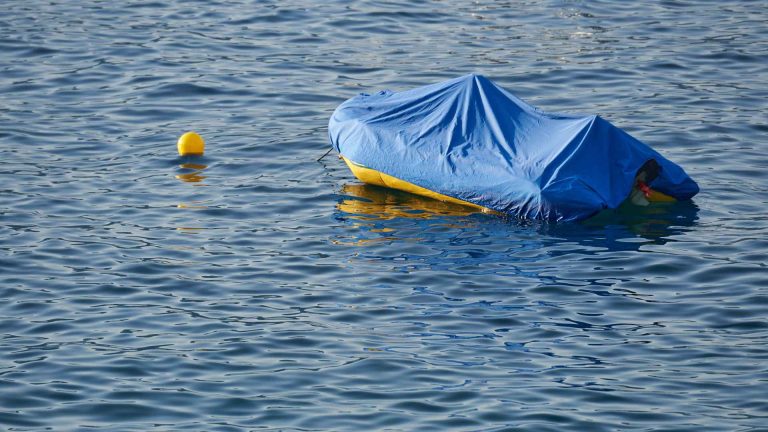A Beginner’s Guide to Mooring Buoys
Learn everything about mooring buoys in this comprehensive beginner’s guide. Discover types, usage, components, and tips for secure mooring.
Mooring buoys are indispensable tools for boaters, offering a secure and environmentally friendly way to anchor vessels without damaging delicate marine ecosystems. Whether you’re a novice boater or looking to refine your mooring skills, this guide provides an in-depth exploration of mooring buoys, covering their purpose, types, components, usage, and key considerations for selecting and maintaining them. By understanding mooring buoys, you can ensure the safety of your vessel, protect the environment, and enhance your boating experience.
What is a Mooring Buoy?
A mooring buoy is a floating device anchored to the seabed, designed to secure boats and ships in specific locations without the need for traditional anchoring. Unlike navigational buoys, which mark channels or hazards, mooring buoys provide a fixed point for vessels to tie up, preventing drifting, collisions, or grounding. They are commonly found in marinas, harbors, coastal areas, and sensitive marine environments like coral reefs, where anchoring could cause ecological harm.
Mooring buoys are typically white with a horizontal blue band, making them easily identifiable. They are constructed to withstand harsh marine conditions, including wind, waves, and currents, ensuring a stable and reliable mooring point. By using mooring buoys, boaters can avoid the wear and tear on their anchoring gear and minimize environmental impact, making them a preferred choice in many boating scenarios.
Purpose of Mooring Buoys
Mooring buoys serve multiple critical functions in maritime environments:
- Secure Vessel Mooring: They provide a stable and reliable point for securing boats, preventing drifting in busy waterways or during adverse weather conditions.
- Environmental Protection: By eliminating the need to drop anchors, mooring buoys prevent damage to sensitive marine ecosystems, such as coral reefs and seagrass beds.
- Reduced Equipment Wear: Mooring buoys reduce stress on a vessel’s anchoring gear, extending its lifespan.
- Congestion Management: In crowded areas like marinas or popular boating destinations, mooring buoys help organize vessel placement, reducing the risk of collisions.
- Convenience: They offer a quick and straightforward mooring solution, allowing boaters to secure their vessels without deploying heavy anchors.
In areas like the Florida Keys National Marine Sanctuary, mooring buoys have been instrumental in protecting coral reefs. Since 1981, nearly 400 buoys have been deployed to prevent anchor-related damage, with an additional 375 in Boot Key Harbor and Key West Mooring Field for transient boats and liveaboards.
Identifying Mooring Buoys
Recognizing a mooring buoy is crucial to avoid legal and navigational issues. It is illegal to tie a vessel to any buoy other than a designated mooring buoy, as this can obstruct navigation and result in fines. Here’s how to identify a mooring buoy:
- Color: Mooring buoys are universally white with a horizontal blue band. Some may feature a white light for visibility at night.
- Shape: They come in two primary shapes:
- Spherical (Mooring Ball): Uniform in diameter, ideal for calm waters like harbors or marinas with minimal wave action.
- Tapered (Conical): Wider at the base and narrowing toward the top, designed for rougher waters with stronger waves and currents for enhanced stability.
- Markings: Mooring buoys may include numbers, letters, or logos to indicate ownership (private or public) or specific usage, such as for dive sites or marina mooring fields.
Understanding these characteristics ensures boaters can quickly identify and use the correct buoy, adhering to maritime regulations.
Types of Mooring Buoys
Mooring buoys vary in design to suit different vessel sizes, water conditions, and mooring requirements. Below are the primary types:
| Type | Description | Best Use |
|---|---|---|
| Single-Point Mooring (SPM) | Anchored at one seabed point, allowing vessels to rotate with wind and currents. | Large vessels, open water, cargo loading/unloading. |
| Multi-Point Mooring | Multiple buoys or anchors connected by lines for enhanced stability. | Marinas, harbors with strong currents or winds. |
| Mooring Ball | Spherical buoys for smaller vessels in shallow, calm waters. | Recreational boats in protected areas. |
| Temporary Mooring Buoy | Lightweight, designed for short-term use in busy areas. | Temporary stops in navigable waterways. |
- Single-Point Mooring (SPM): Ideal for large vessels like tankers, SPM buoys allow 360-degree rotation, accommodating changing wind and current directions.
- Multi-Point Mooring: Used in high-traffic areas, these systems provide robust stability by distributing forces across multiple anchor points.
- Mooring Ball: Common in calm waters, these spherical buoys are cost-effective and suitable for small to medium-sized boats.
- Temporary Mooring Buoy: Designed for short-term mooring, often used in busy waterways or near dive sites.
Components of a Mooring Buoy System
A mooring buoy system comprises several key components, each contributing to its functionality and durability:
- Buoy: The floating component, typically made of foam-filled polyethylene or steel, provides buoyancy and visibility. Shapes include spherical or cylindrical, with colors (white with blue band) adhering to maritime standards.
- Mooring Chain or Line: Connects the buoy to the seabed anchor. Chains, often galvanized steel, are used for larger vessels or deeper waters, while nylon or polyester ropes suit smaller boats in shallow waters.
- Seabed Anchor: Secures the system to the ocean floor. Common types include:
- Mushroom Anchor: Digs into soft seabeds (mud or sand) for a secure hold.
- Deadweight Anchor: Heavy concrete blocks for rocky or shallow bottoms.
- Helix Anchor: Screwed into the seabed for superior holding in deep or high-current areas.
- Attachment Hardware: Includes shackles and swivels made of corrosion-resistant materials like stainless steel. Swivels prevent line twisting, while shackles connect components securely.
- Identification Markings: Numbers, letters, or logos indicate ownership or specific use, ensuring compliance with local regulations.
Below is a diagram illustrating a typical mooring buoy system:

How to Use a Mooring Buoy: Step-by-Step Guide
Securing a vessel to a mooring buoy requires precision and caution. Follow these steps for a safe and effective mooring process:
1. Approach the Buoy:
- Approach slowly from downwind or against the current for better control.
- Keep the buoy on the same side as the helm station for visibility.
- Maintain awareness of nearby vessels, swimmers, or divers.
2. Assess the Mooring System:
- Identify the buoy type (spherical or tapered) and its components (pickup line, shackle, or eyelet).
- Ensure the buoy is suitable for your vessel’s size and weight.
3. Prepare Your Boat:
- Assign a crew member to handle the boat hook and mooring line.
- Maintain idle speed to ensure precise maneuvering.
4. Grab the Buoy:
- Use a boat hook to retrieve the buoy’s pickup line or attachment point.
- Pull the line close to the bow of the vessel.
5. Thread the Mooring Line:
- Pass a tangle-free mooring line through the buoy’s attachment point (e.g., metal ring or eyelet).
- Double the line for added security in rough conditions.
6. Secure the Line:
- Tie the mooring line to a strong point on the boat, such as a bow cleat, using a reliable knot like a cleat hitch.
- Ensure the line is taut but not overly tight to avoid strain on the buoy or vessel.
7. Adjust Tension:
- Check the line for appropriate tension, allowing some slack to accommodate wave and tidal movements.
- Avoid excessive tension, which could damage the mooring system or boat.
Pro Tip: In rough conditions, add extra scope to the mooring line to reduce wear on the system and improve vessel stability. Regularly inspect the buoy and line for wear or damage.
Common Mooring Systems
Mooring systems vary based on water conditions and vessel requirements. Here are the most common styles:
| Mooring System | Description | Best Use |
|---|---|---|
| Single-Point Mooring | Single anchor point allowing vessel rotation. | Open water, large vessels. |
| Multi-Point Mooring | Multiple anchors or buoys for enhanced stability. | High-traffic marinas, strong currents. |
| Swing Mooring | Single anchor with a long line, allowing free swinging with tides/winds. | Calm waters, small to medium boats. |
| Stern-To Mooring | Boat backed into a dock, secured with lines to fixed points. | Mediterranean marinas, tight spaces. |
| Fore and Aft Mooring | Lines attached to bow and stern for maximum stability. | Areas with minimal tidal movement. |
| Dockside Mooring | Boat tied directly to a dock or pier. | Harbors, marinas with direct land access. |
- Single-Point Mooring: Simple and versatile, ideal for areas with changing winds or currents.
- Multi-Point Mooring: Offers superior stability in challenging conditions, often used in busy harbors.
- Swing Mooring: Allows vessels to move freely with environmental changes, suitable for calm waters.
- Stern-To Mooring: Common in Mediterranean marinas, maximizing space efficiency.
- Fore and Aft Mooring: Ensures minimal movement, ideal for stable conditions.
- Dockside Mooring: Provides direct access to land-based amenities, common in marinas.
Where to Find Mooring Buoys
Mooring buoys are strategically placed in various locations to facilitate safe and convenient mooring:
- Marinas and Harbors: Designated mooring fields offer secure spots for boats, often with access to amenities like fuel docks and restrooms.
- Coastal Areas: Offshore buoys provide mooring points in deeper waters, ideal for recreational boating or temporary stops.
- Navigable Waterways: Rivers, lakes, and canals may have buoys for temporary mooring, allowing boats to pause without docking.
- Dive and Snorkel Sites: Buoys near coral reefs or shipwrecks protect marine ecosystems while providing secure mooring for divers.
- National Parks and Protected Areas: Marine reserves and parks use buoys to minimize environmental impact in sensitive habitats.
In the Florida Keys, for example, mooring buoys are prevalent in the National Marine Sanctuary to protect coral reefs, with specific regulations for their use.
Choosing the Right Mooring Buoy
Selecting the appropriate mooring buoy involves several key considerations:
1. Vessel Size and Weight:
- Larger vessels require buoys with higher buoyancy and stronger mooring systems.
- Example: A 30-foot boat may need a buoy with a minimum buoyancy of 100 lbs, while a 60-foot vessel may require 500 lbs or more.
2. Water Conditions:
- Calm waters (e.g., harbors) suit smaller, spherical buoys.
- Rough waters (e.g., open seas) require larger, tapered buoys with robust anchors.
3. Mooring System Weight:
- The buoy must support the weight of the chain, anchor, and vessel. For example, a 500-lb mushroom anchor requires a buoy with sufficient buoyancy to keep the system afloat.
4. Material Durability:
- Choose buoys made of high-density polyethylene or foam-filled plastic for UV and corrosion resistance.
- Example: Carolina Waterworks offers buoys with 3/16” thick polyethylene shells and a two-year warranty.
5. Local Regulations:
- Check with local harbormasters for specific buoy size, weight, and placement requirements.
- Example: The Town of Chatham, MA, specifies different anchor weights for protected vs. exposed mooring fields.
Example Product Specification (Carolina Waterworks Mooring Buoy):
- Size: 12” to 32” diameter
- Material: High-density polyethylene shell, expanded polystyrene foam core
- Buoyancy: Varies by size (e.g., 100–600 lbs)
- Features: Reflective blue stripe, shackle pockets, rope nests, custom colors available
- Price: $50–$200 (depending on size and customization)
- Warranty: 2 years
Example Accessory (Taylor Made Galvanized Swivel #35647):
- Material: Galvanized steel
- Price: $39.95
- Use: Connects mooring chain to buoy, prevents twisting
Mooring Buoy Installation
Installing a mooring buoy requires authorization from local authorities and adherence to regulations to ensure navigational and environmental safety. Here’s an overview of the process:
1. Obtain Authorization:
- Contact the local harbormaster or relevant agency to apply for a mooring permit.
- Provide details about the vessel, mooring location, and buoy specifications.
- Pay any required fees (e.g., annual license fees based on vessel length: $100 for a 30-foot vessel, $200 for a 40-foot vessel).
2. Select Equipment:
- Choose a buoy, anchor, and chain based on vessel size, water depth, and seabed type.
- Example: A mushroom anchor (5–10 times the boat length in pounds) for soft seabeds or a concrete block for rocky bottoms.
3. Installation:
- Hire a professional mooring installer for complex setups, especially for helix or deadweight anchors.
- For mushroom anchors, the chain length should be 1.5 times the maximum water depth, with a lighter top chain equal to the high tide depth.
- Use galvanized proof coil chain (Grade 30) for cost-effective corrosion resistance.
4. Maintenance:
- Inspect the buoy, chain, and anchor annually for wear or corrosion.
- Replace chains every 3–5 years in saltwater environments to prevent failure.
Diagram of Mooring Installation:

Safety Tips and Common Mistakes to Avoid
To ensure safe mooring, avoid these common mistakes:
- Approaching Too Quickly: High speeds can damage the buoy or vessel. Always approach at idle speed.
- Incorrect Line Attachment: Use proper knots (e.g., cleat hitch) and avoid tying directly to the buoy to reduce stress.
- Neglecting Inspections: Regularly check the buoy, chain, and anchor for wear, especially in saltwater environments.
- Overloading the Buoy: Ensure the buoy’s buoyancy matches the vessel’s weight and environmental conditions.
- Ignoring Weather Conditions: Check forecasts for wind, waves, or currents, and adjust line scope accordingly.
Safety Tips:
- Use double-braided poly-nylon mooring lines for UV and abrasion resistance.
- Maintain a lookout for swimmers, divers, or other vessels.
- Report damaged buoys to local authorities or sanctuary offices.
- In rough conditions, add extra scope to the mooring line to reduce strain.
Environmental Benefits of Mooring Buoys
Mooring buoys are critical for protecting marine ecosystems. Traditional anchors can damage coral reefs, seagrass beds, and other sensitive habitats by digging into the seabed or dragging chains. Mooring buoys, particularly in areas like the Florida Keys, eliminate this risk by providing fixed mooring points. For example, the Florida Keys National Marine Sanctuary uses 18–22-inch buoys with embedment anchors to secure vessels without harming nearby corals.
FAQs
What is the difference between docking and mooring?
Can I moor my boat anywhere?
What is the best mooring line material?
How often should mooring systems be inspected?
Conclusion
Mooring buoys are essential for safe, convenient, and environmentally friendly boating. By understanding their purpose, types, components, and proper usage, boaters can ensure secure mooring while protecting marine ecosystems. Whether you’re mooring in a calm harbor or a rough coastal area, selecting the right buoy and following best practices will enhance your boating experience. Invest in high-quality equipment from reputable suppliers like Carolina Waterworks, and always adhere to local regulations for a safe and enjoyable time on the water.
For more information or to explore durable mooring buoys, visit Carolina Waterworks or contact your local harbormaster for guidance.
Happy Boating!
Share A Beginner’s Guide to Mooring Buoys with your friends and leave a comment below with your thoughts.
Read How to Swap / Install LED trailer lights / upgrade until we meet in the next article.






